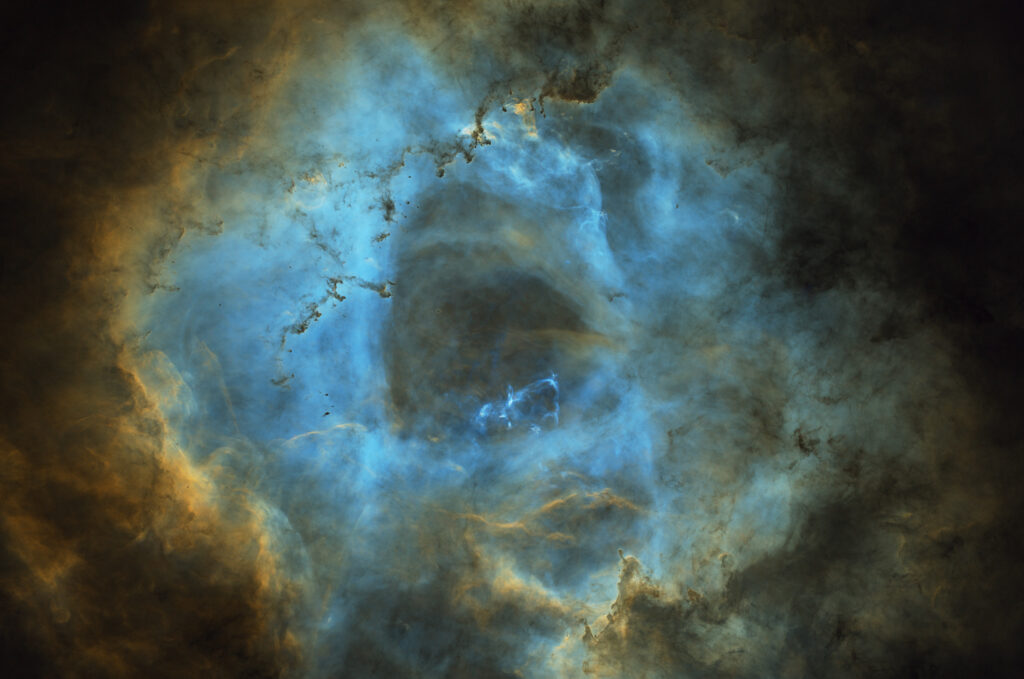Home Observatory Clinton TN, AP130GTX Refractor, QHY268M CMOS Camera, AP1200GTO Mount. Approximately 10.6 hours total exposure through Ha, O[III], and S[II] emission line filters.

AP130GTX with QHY268M CMOS Camera on AP1200GTO Mount. Total Exposure time of ~17.5 hours comprised of 105 x 5 minute sub frames. Images captured from Clinton, TN.
Located roughly 5,000 light years from earth, the Rosette Nebula is approximately 130 light years in diameter and is home to about 2,500 new born stars in this star forming complex. For a more down to earth factoid, the Rosette Nebula is the official astronomical object of the State of Oklahoma as passed by the Legislature in 2019.